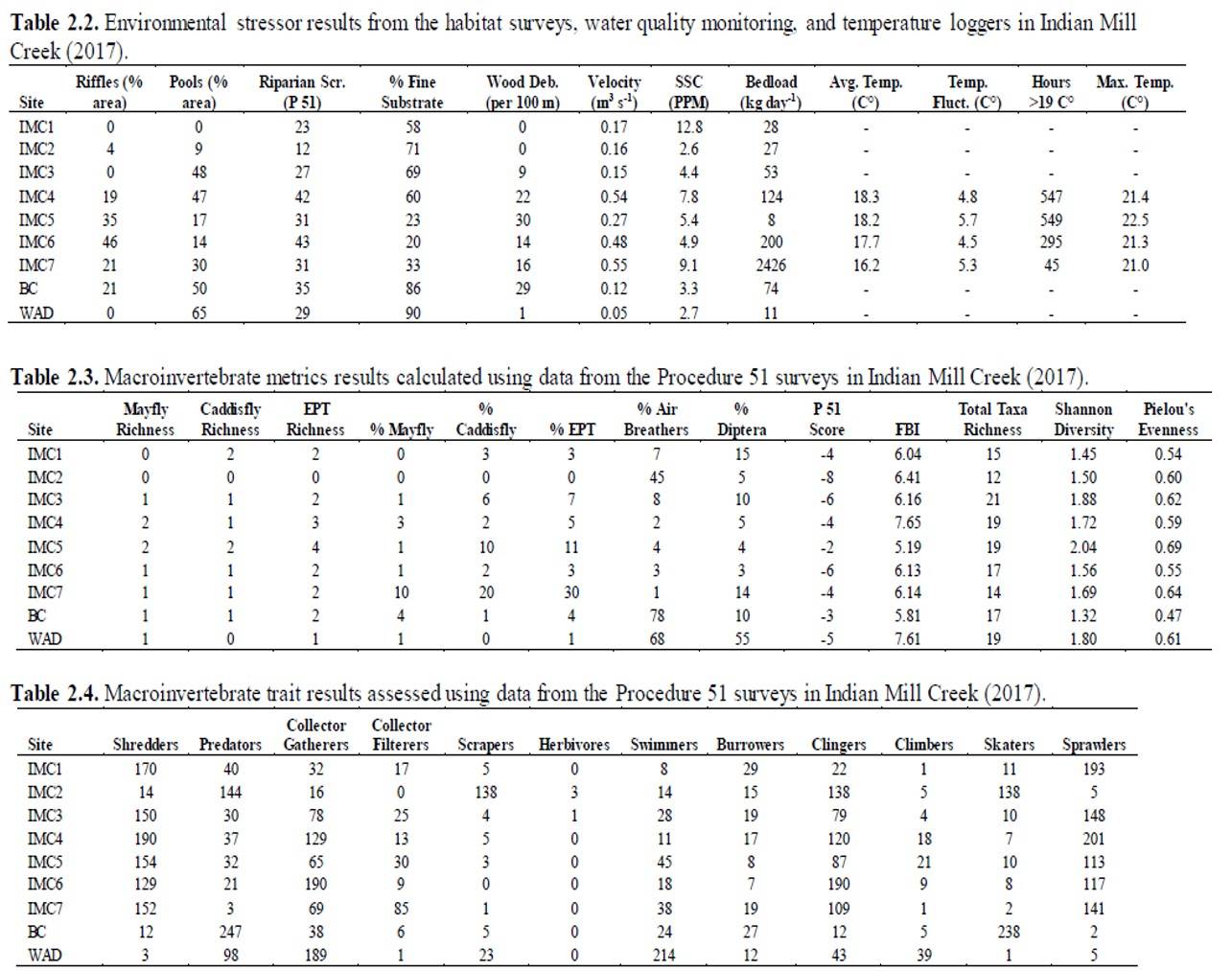Erosion and Ecological Impacts to an Urban Freshwater Stream
[1552499890].jpg)
Sediment pollution is a major cause of stream degradation. Our objectives were three-fold. First, we assessed the impacts of environmental stressors on the structure of fish and macroinvertebrate communities across a gradient of agricultural to urban land cover in a coldwater tributary of the Grand River, Michigan, USA called Indian Mill Creek.
We found that instream woody debris, streambed substrate, riffle and pool habitat variability, and riparian conditions affected aquatic macroinvertebrates along an agricultural to urban land cover gradient. We also found that variation in fish community assemblage was driven largely by stream flow and temperature regimes and could be impacted by episodic pollution events that have occurred within the lower, urbanized part of the watershed. Second, we identified critical areas for sediment management in the Indian Mill Creek watershed using the Enhanced Generalized Watershed Loading Functions (GWLF-E) model and MapShed plugin for MapWindow GIS to simulate the water budget, field erosion, and streambank erosion in 20 subbasins from 1997-2015. Results also showed that southwest sub-basins had the highest rates of runoff because of impervious surfaces and urbanization. Field erosion was greatest in the lower watershed with steep slopes and erodible soils. The proportion of sediment load from streambanks and the lateral bank erosion rate increased in a downstream direction.


Third, we evaluated three techniques for quantifying sediment pollution from streambank erosion: erosion pins, total station surveyor, and terrestrial laser scanning, and assessed the spatial distribution of erosion rates in the watershed in relation to the GWLF-E modeling. We found that erosion pins and total station surveying are preferable for vegetated banks, while laser scanning can collect high quality data for barren banks. We also found that streambank erosion rates vary spatially in the watershed, with the lower reaches experiencing net deposition of sediment on the banks, while the upper reaches experience net erosion that contributes to sediment loading in the creek. We estimate that streambank erosion contributes 28.5% of sediment to the creek’s total sediment load. Findings of these studies help watershed managers prioritize restoration programs to reduce sediment loadings and have broad applications for streams degraded by sediment.
This project was supported by Grand Valley Metropolitan Council and Annis Water Resources Institute.
